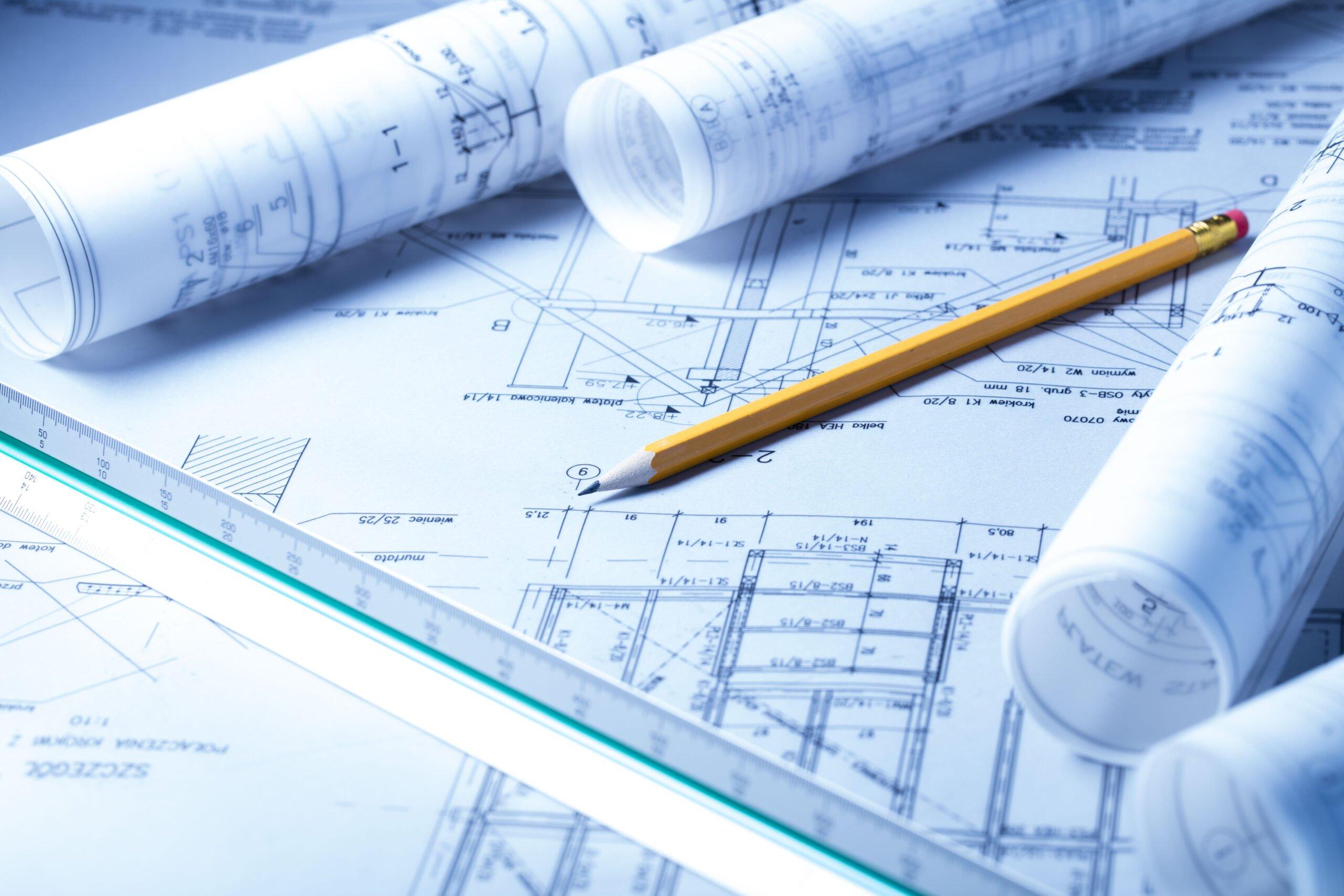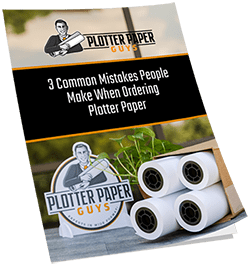Blueprint Paper: What Kind of Paper is Used for Blueprints?
Have you ever wondered why blueprint paper used to be blue but isn’t anymore? Blueprints were created in the 1800s as a faster and cheaper way to copy original documents. The method used back then was a chemical reaction that made the pages turn blue, with the traces of the original document showing up as white lines.
Technology has come a long way, and now various types of blueprints can be made depending on what you’re using them for. One of the most important qualities of blueprints today is the type of paper used. Keep reading to learn about the best types of paper to use for your blueprints.
What is a Blueprint?
A blueprint is a carefully made design of technical drawings that is basically used as a floor plan. Each blueprint contains the measurements and specifications needed for not only the construction process but also for coming up with the workers’ schedule and obtaining the required permits.
Architects and engineers both work to draw up blueprints that bring to life designs that are both aesthetically pleasing and functional, and safe. These construction plans are used by contractors to build all the homes, buildings, and structures in our communities.
Origin on Blueprints
We’re going to go over a brief history of the types of blueprints to help you understand the differences between blueprint papers. The Avalon Blog also has a more detailed history of the blueprint you can check out as well.
The method of blueprinting was invented in 1842 to copy documents without having to do it by hand. The first method used was cyanotype processing. The process ended up turning the paper into a negative image, resulting in actual blueprints that were later called blueprints.
This method worked better for architects and engineers who regularly used blueprints. They could now copy their large format documents without having to hand trace them repeatedly. After the cyanotype process became popular, other methods of blueprinting gradually became available.
Different Methods of Blueprinting
While blueprints were created with an actual blueprinting method, the term blueprint refers to the document made. The original blueprinting method worked well, but eventually, newer technology offered simpler methods.
The Cyanotype Process
The cyanotype process is the original method that would reproduce documents using chemicals that turned the paper blue. A drawing is made on tracing paper and then pressed against a chemical-coated paper. The chemicals on that paper are a mixture of citrate and potassium.
The chemical-coated paper was then exposed to light, which caused a reaction and made the chemicals turn the paper blue. The tracings of the original drawing stay white, and after the paper has been washed in water, the design can be seen against the Prussian blue background.
The Diazo-type process
The diazo-type process is when a paper becomes light-sensitized through a combination of diazonium salt, a reactant, and an acid. The acid works to prevent the other two chemicals from reacting. Then this paper is similarly pressed against the translucent paper drawing and reacts once it’s put into the light.
The paper should be developed using ammonia, which neutralizes the acid. This allows a reaction to occur between the diazonium salt and its reactant. The reaction makes a blue line that forms in the tracings from the original drawing against the white background.
Digital Blueprints
Through the evolution of modern technology, many programs have become available for architects and engineers to design their ideas on a computer or tablet. Blueprints that are done digitally are often referred to as construction documents. To print these construction documents, you need a much larger print paper called plotter paper.
Blueprint Methods Still Used Today
Blueprinting proved to be an easier way of copying documents in the 1800s, but what happened when the copy machine was invented? Since copy machines were built to copy standard-sized documents, this didn’t change the need for blueprinting wide-format documents and drawings for a long time.
The diazo-type process of printing is more popular today than the original cyanotype process. Even though there are easier ways to copy these large-scale documents with modern technology, sometimes it’s cheaper to use the diazo-type process.
Large-scale printers are now widely available and can print the same documents from computers with the right software. This proves to be a less complicated system than the cyanotype and diazo-type processes. When machines are easily accessible and affordable, this is the most convenient option for most people.
We wanted to go over an easy-to-understand explanation of blueprints before getting into the types of blueprint paper. So if you’d like a more in-depth understanding of the history of blueprints and how they’ve evolved along with modern technology, check out this construction blog.
Types of Blueprint Paper
Each method of blueprinting that we went over requires a different type of paper.
Since cyanotype processing isn’t really done anymore, cyanotype paper is mostly for hobbies and crafts. Cyanotype paper can be found at various craft stores and through some online retailers (should we mention Nature Print Paper here?). In this article by My Modern Met, you can read about the different ways cyanotype paper is used in art today.
The diazo-type process method of blueprinting is a little uncommon today, but it isn’t obsolete. Diazo paper can still be found online through several retailers specializing in office products, including here on our website. To print on diazo paper, your office equipment would need to include a diazo machine and some ammonia.
To print out your large-scale, digital blueprints, you would need plotter paper. Plotter paper is the most prominently used blueprint paper today.
What is Plotter Paper?
Creating digital blueprints from software on your computer or tablet requires you to have a large-scale printer, or plotter printer, to print your designs. These printers need large enough paper, called plotter paper, to function properly.
To know what kind of blueprint paper suits your needs best, it’s good to understand the different types and what they’re used for.
Types of Plotter Paper
Vellum
Vellum plotter paper is a popular choice when printing many high-quality blueprints or a final design of something. Vellum paper produces very crisp and high-quality prints. This type of paper can only be used for inkjet printers.
Gloss
Gloss plotter paper produces sharper and more vibrant prints; thus, it is a good option for giving presentations. Gloss paper can be used with laserjet printers and LDC plotters.
Bond
Bond plotter paper is a cheaper and more versatile option. Bond paper can be used for black and white plotting; therefore, it is a great option for architects and engineers who need to print out check plots. It can be used in inkjet and pen plotters.
Mylar
Mylar is a transparent film used by engineers and surveyors. Mylar can come in frosted/ coated as well as completely clear. Mylar is durable and great for templates and blueprint overlays.
Tyvek
Tyvek paper is waterproof, tear-resistant, lightweight, and durable. This combination of qualities makes it the perfect material for construction sites around dust and elements. Tyvek is a unique material and can only be printed from certain printers, so it’s always important to make sure your printer is compatible with the Tyvek paper roll before trying to use it.
Sizes and Weights of Plotter Paper
Plotter Paper comes in a wide range of sizes to better suit your needs. Our paper is available in rolls and sheets for all different-sized projects on our website. However, sometimes custom sizing is needed due to the specifications of a project, and we’re able to help you with that too on our custom sizing orders page.
Plotter paper comes in a typical range of weights from about 13lbs a ream to over 28lbs. It can definitely exceed that weight, but the heavier paper is usually for larger projects. The weight can also make a difference in the durability of the paper, as well as if it can be printed in color or not.
Since the weight of the paper plotter paper correlates with its durability, the heavier papers tend to cost more than the lighter papers. Some plotters can only handle specific weights, so it’s important to check the guidelines for the printer before buying blueprint paper.
Contact Us About Your Paper Needs
Choosing the best blueprint paper for your project can become overwhelming with so many options. If you’re unsure of what type of paper products to use for your project, contact us through our website. Our customer service team is always ready and willing to help you with any questions you may have.




